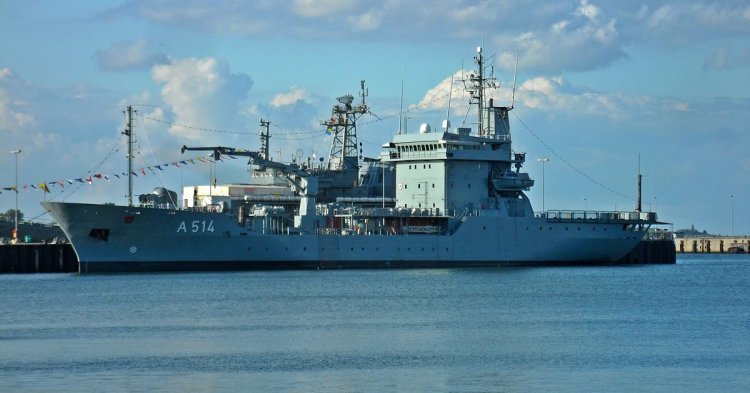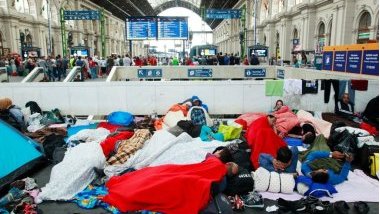Imagine Mr. X, a baker; he makes the best cakes in town. Now imagine Ms. Y whose cakes are so good they are continuously sold out, because she only bakes with freshly picked fruits. As a consequence, Mr. X decides to use an innovative species of chocolate, to sell more cakes to more customers and regain the title of best baker in town. In response, Ms. Y invents a new recipe. And so on.
If we now substitute Mr. X and Ms. Y with States, the scenario does not change. In fact, in the international framework, each national policy affects and influences, and is influenced and affected by, other States’ national policies. Today, in a historical moment in which globalisation is at its peak, this “influencing” process is so profound that States mutually shape each other’s attitude, continuously. However, not only does it take place among States, but also among levels of governance, with the result that the national, the European and the global levels mould one another.
A practical example which helps to grasp the conceptual essence of multi-level interconnectedness is the hot, highly-discussed topic of immigration which has been increasingly securitised at all levels. Before, however, explaining what has happened, I deem it necessary to define what securitisation is. Securitisation is the presentation of an issue as an existential threat which needs to be managed through emergency measures, even though these measures fall outside the scope of normal political procedures. What matters is not that the issue is a threat per se, but that it is presented as a danger, and the addressed audience accepts it as such.
From national to regional: European States adopt securitisation, the EU too
For some years now, a serious number of European governments have adopted securitising measures towards immigration. Triggered and frightened by the terrorist attacks to the Twin Towers in New York in 2001, European ruling classes began identifying migration as a threat to national autonomy, identity and security. If on one side they perceive their autonomy endangered because they need to cooperate among each other to face a large migratory influx, on the other side they sense their own national identity at risk because multiculturalism is seen as clashing with ethnic identification.
At the same time, national security is seen as being under attack due to the frustrating correlation made between immigration and terrorism. In this scenario, where the three pillars of state sovereignty are in jeopardy, plenty of European States have started implementing anti-immigration and security-driven policies, built upon the premises of the “help them at home” rhetoric. An example is the European election slogan by the Italian interior minister Matteo Salvini (“Stop bureaucrats, stop bankers, stop ‘soft hearted people’ and stop the [migrant] boats”) or the draconian Hungarian migration policies.
But if more European States share this mindset, then it will be projected at the European level of governance, given its decision-making process which foresees agreement between the EU Council and Parliament on every issue. Consequently, considering that the EU Council represents national governments and the Parliament consists of individuals democratically elected by citizens who have accepted the securitisation of migration, EU decisions will mirror national standings. Therefore, if national positions have an anti-immigration nature, it goes without saying that the same will happen in the EU.
Fortunately, the EU is characterised by heterogeneity, meaning that not all States share the same perspective on immigration. Nevertheless, the EU has affected them with its hostile policies, while supporting already anti-immigration governments.
From regional to national: the EU affects national attitudes
Almost in furtherance of national securitising measures to immigration, the EU has opted for a precise political position on immigration. Starting by depicting the large influx of migrants as a crisis that needed to be tackled through emergency measures, the EU has not only increased insecurity in its citizens, but has it also adopted security-driven policies that have been the translation of its securitising attitude. These policies have prioritised military concerns, i.e. border controls, return and readmission, over fundamental rights, as the European Agenda on Migration demonstrates.
Worth particular attention is the hotspot approach proposed in the European Agenda on Migration. A hotspot is “an area at the Union’s external borders facing significant migratory pressure” (Danish Refugee Council) in which reception facilities for initial reception, identification and registration of irregular migrants are carried out. Though supposed to comply with international and European norms, the treatment irregular migrants receive is heinous, especially in Italy and Greece where the centres are overcrowded, hygiene conditions are detrimental, showers are hardly accessible and privacy is a mirage. The hotspot approach is but the fulfilment of EU deterrence measures to prevent arrivals.
Another striking example of European security-driven policies is Operation Sophia which represents how the global level of governance, in this case the United Nations, has supported and thus further influenced the European level of governance.
EU-UN: regional and global levels supporting each other
The EU has two States as permanent members in the United Nations Security Council: United Kingdom and France. Because of the European permanent members, it is very unlikely that the Security Council will ever take a decision at odds with the EU’s interests. Thus, when the EU decided to launch Operation Sophia in 2015, the Security Council supported it through the adoption of Resolution 2240. The resolution made the EU operation a mission authorised under Chapter VII of the UN Charter. Indeed, under the Resolution, Member States are authorised to inspect, seize and dispose vessels on the high seas off the coast of Libya and “use all measures commensurate to the specific circumstances” against smugglers or vessels if thought to be operated for smuggling and/or trafficking. In other words, the Security Council even permitted the use of force.
The fact that the United Nations adopted the Resolution is on one side confirmation that EU countries in the United Nations are of unspeakable importance and are feared by their “colleagues”, but also that the Security Council has accepted the EU securitisation of immigration. The problem is that this kind of an application of the Charter to a crisis of humanitarian nature sets a precedent which will not be that easy to circumvent in future times.




Follow the comments: |
|
